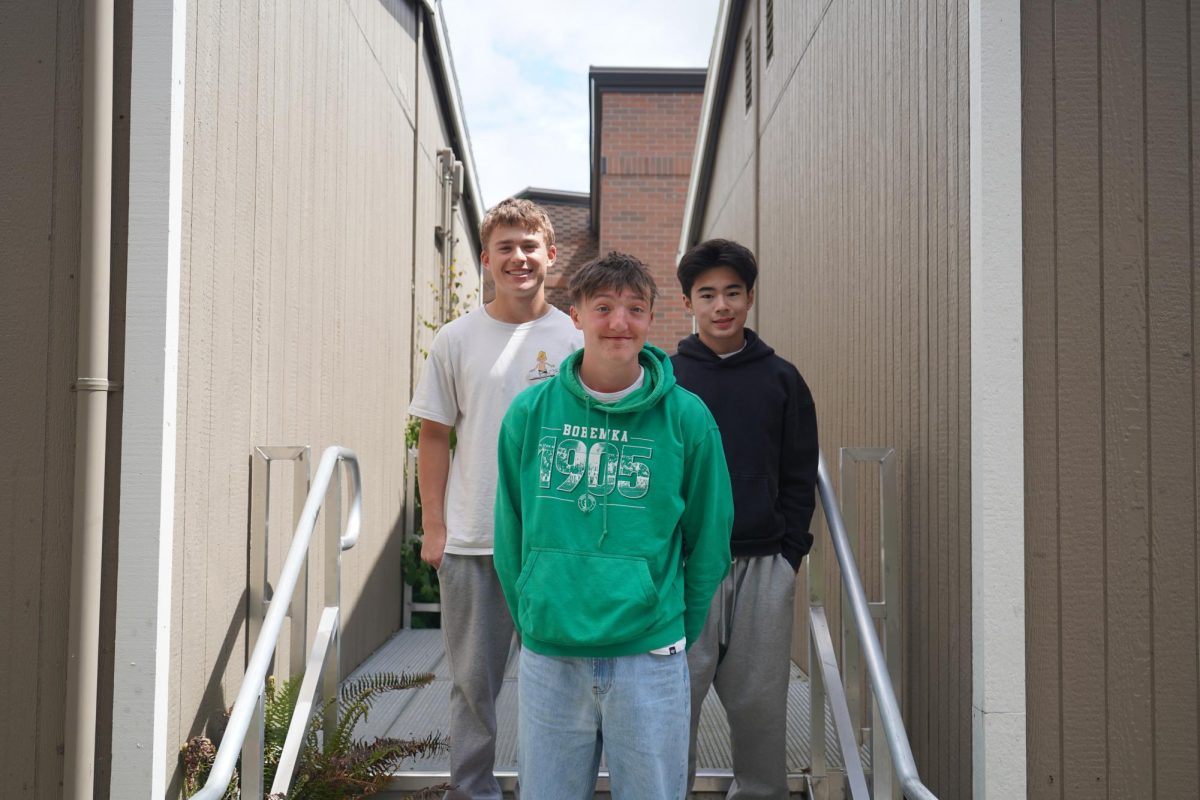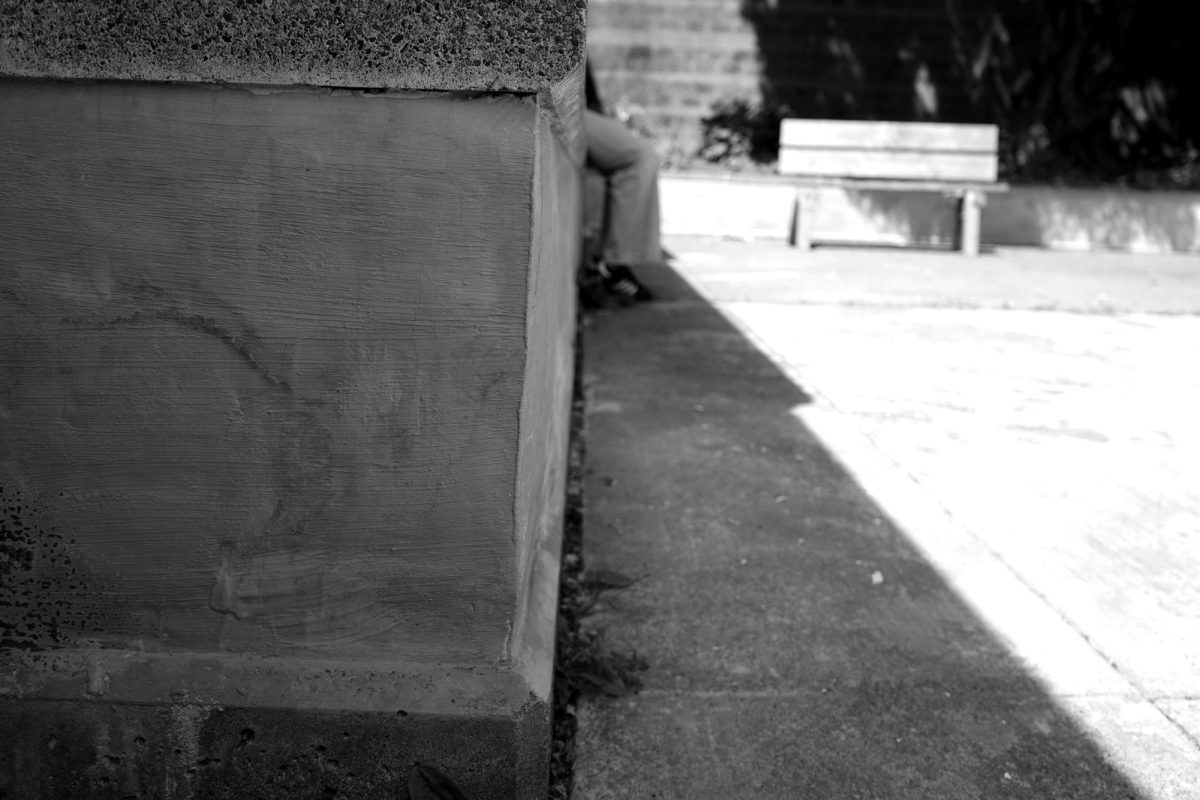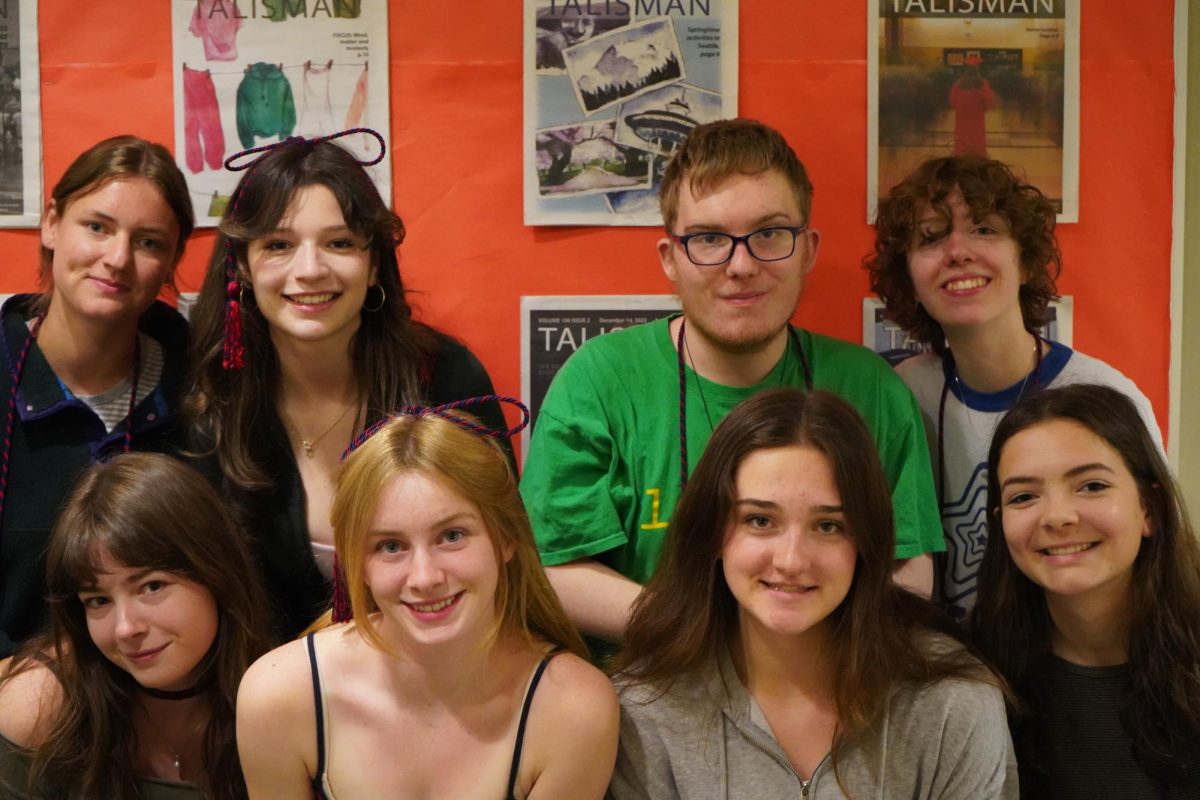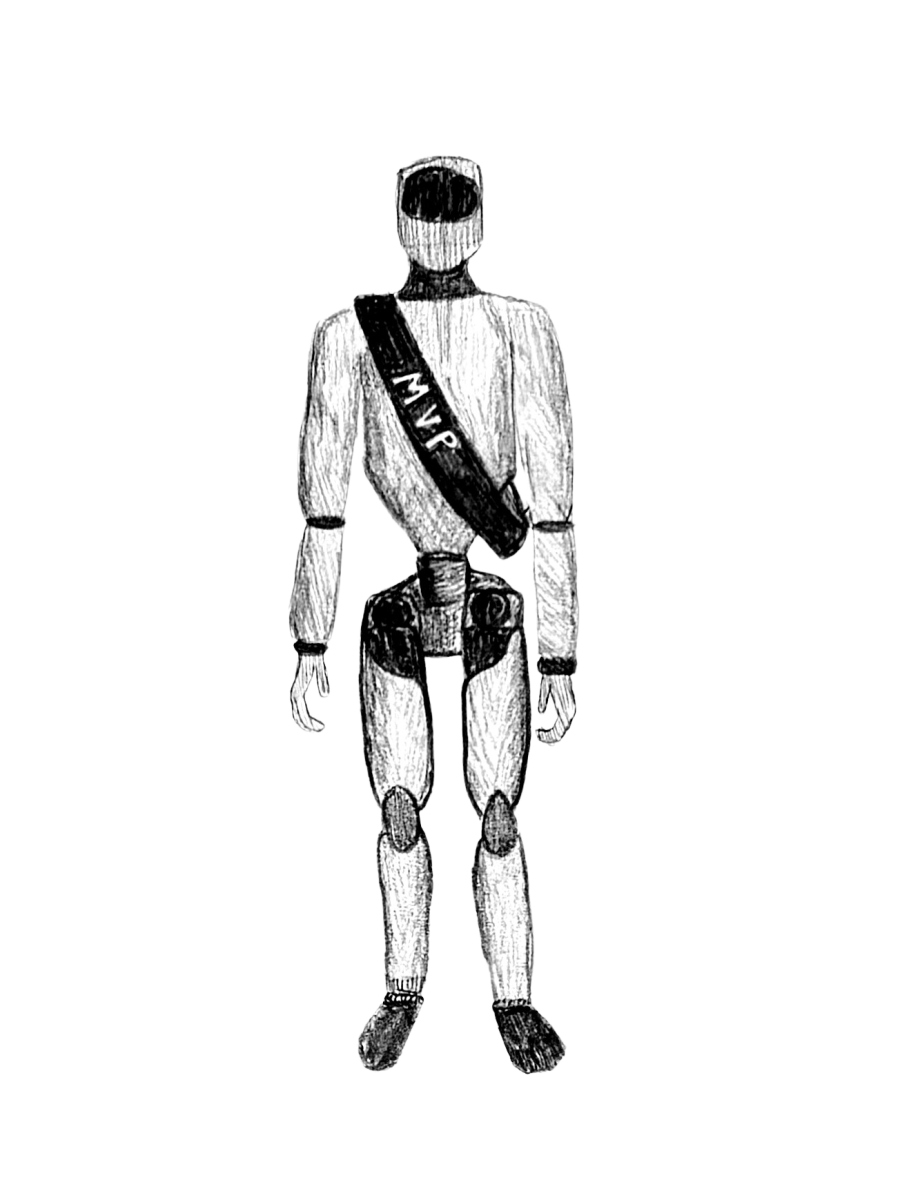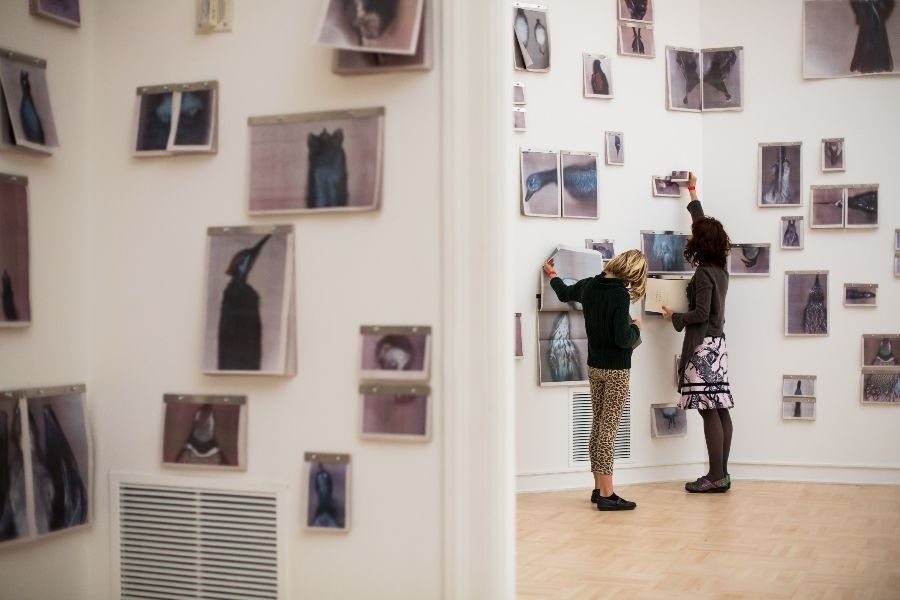Installation artist Ann Hamilton takes over the Henry
Greta Rainbow, Managing Editor
Originally published March 25, 2015
Photo courtesy of Jonathan Vanderweit) Ann Hamilton, renowned for her large-scale installations, scanned animals from the Burke Museum to create the images now in the Henry Art Gallery. Visitors are invited to tear pages from the wall, with the knowledge that what is taken will not be replenished.
I tore a photograph of a bird, blurred and purple-hued, from the wall of a museum. I tucked it inside my notebook; I carried it out of the museum; I tacked it to my own wall. A strange deviation, and yet, thanks to Ann Hamilton’s “the common S E N S E,” totally sanctioned.
The Henry Art Gallery’s latest exhibition is a curiosity shop of wisdom and ambiguity. Through April 26, delicate photographs, textiles of the “seal intestines and beads” variety, commanding sound, found objects and collectable words will fill the University District space.
Hamilton draws on several ideas in creating “the common S E N S E.” The collection is threaded by wood panels, lining gallery room walls and stairwell landings, on which rest thick stacks of newsprint with the preface of “Please take what speaks to you.” The texts vary in style, length, and typeface, but remain linked through the idea of touch, both literal and metaphorical.
Visitors brush their fingers over the stacks, occasionally lifting a page from its pegs. I leave with the wisdoms of T.S. Eliot, Anne Carson and Kafka, and I wonder who picked up these same pages and why. Hamilton has composed an art piece that begins with humble sheets of words, and ends with us, the performers, weaving these words into our own lives. We become distantly intertwined with strangers, as we share a resonation. The T.S. Eliot quote, “These fragments I have shored against my ruins” now hangs in the corner of my room. Where else in this world does an identical page now hang? Did they take it from the museum for the same reason that I did? A commentary and curiosity is sparked, and thus the true art of the exhibition is in the continued experience that happens beyond the gallery.
Hamilton is dedicated to singular experience, creating a show that will be seen a little differently by everyone. Many artists strive for this in a more subtle manner, relishing in multiple interpretations of their abstraction. Hamilton is upfront about her intentions, noting that fluidity of time is part of “the common S E N S E.”
Three adjoining rooms are devoted to scanned images of dead animals. The newsprint is mounted to the wall in stacks, so visitors may tear an image off for their own possession and leave the rest on the wall. They leave imperfect remnants behind, and their own images crinkle too easily. The scene is beautiful and overwhelming, with different-sized pages closely scattered from floor to ceiling. The images flutter all by themselves, as if the animals, borrowed from the Burke Museum, are palpitating.
These stacks are finite. By the show’s end, some stacks will be empty; it was Hamilton’s intent for the experience to be ever-changing. The pages of text, however, will be updated when necessary. Through a tumblr site, visitors can submit found writing related to touch, and selected contributions will be featured in the gallery.
Another changing aspect of the show is what could be called “quiet performance art”: at different points, volunteers may be found reading or singing, aloud but softly. I watched an impromptu interview in the cavernous room of bull-roarers. Questions asked were along the lines of, “Why is it important to be different from everyone else?” and other equally introspective queries.
In the basement, visitors wander through a small maze of white curtains which, when pulled back, reveal garments made from animals. Again, a quiet beauty and the eerie feeling that there is something alive in these dead remains, and visitors are pulling back the curtain of a canopy bed, invading their sleep.
There is a natural simplicity to “the common S E N S E.” We are dealing with matter most essential to our beings–our interactions with others, with other species; time and its finite or infinite nature–and the flow of the gallery mirrors this sentiment. The lighting is dim and visitors stroll back and forth, interacting with the exhibition as a whole.
“the common S E N S E” is thoughtful. We often ruminate on the “takeaway” of art. What feelings we leave with, what understanding we grasp. Visitors leave the exhibition with something tangible, and within that a host of intangible questions and philosophies. Hamilton’s takeover show is classical in its dedication to the natural world but excellent contemporary art in the way that it makes us think.

